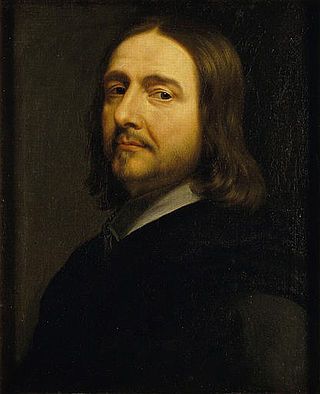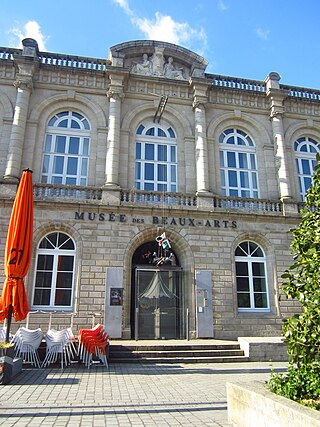
Jean Valade (1710 - 12 December 1787) was a French painter and pastel artist of the Rococo movement, specializing in portraiture.

Jean Valade (1710 - 12 December 1787) was a French painter and pastel artist of the Rococo movement, specializing in portraiture.
He was born in Poitiers. Valade was the son of Léonard who was also a painter and Marie Bellot. He trained with his father before moving to Paris in 1739. [1] He married Gabrielle Louise Remond, 20 November 1752, and has no descendants. His great nephew was Pierre-Jean-Baptiste Chaussard.
In 1750, he was admitted to the Royal Society of Arts and was appointed academician, September 29, 1754. He became a student of Charles-Antoine Coypel, official Painter to the King and theorist, a member of the French School. Valade was later appointed painter to the king. He participated in numerous exhibitions between 1751 and 1781. Denis Diderot published several negative reviews of her portraits. In 1769, he denounced Valade at the Salon, because in his view "[he] is not a poor painter, but a very poor painter, because you can not do two jobs at once."
Jean Valade was very popular as a portraitist, and also as a specialist in pastel, which earned him a large clientele of nobles and bourgeois. During the 1760s, he produced both oil pastel at the portrait of Mr. and Mrs. Faventines Fontenille playing music as well as those of Peter and Elizabeth Faventines, the portrait of Joseph Balthasar Gibert, and one of Mr. Carré de Cande. Two museums on permanent display several works Valade: the Musée des Beaux-Arts d'Orléans and the Musée Rupert-de-Chièvres. Other portraits can be found in Saint-Quentin, Aisne, The Louvre, the Palace of Versailles, and the Château de Maisons.
Jean Valade died on 12 December 1787 in his apartment in the cloister of St. Honoré. He was buried the next day in the vault of the chapel of the Virgin in the church of Saint-Honoré, in the presence of the architect Jean-Baptiste Chaussard and Jean-Baptiste Adam, the husband of his nieces.

Jacint Rigau-Ros i Serra, known in French as Hyacinthe Rigaud, was a Catalan-French baroque painter most famous for his portraits of Louis XIV and other members of the French nobility.

Anne-Louis Girodet de Roussy-Trioson, also known as Anne-Louis Girodet-Trioson or simply Girodet, was a French painter and pupil of Jacques-Louis David, who participated in the early Romantic movement by including elements of eroticism in his paintings. Girodet is remembered for his precise and clear style and for his paintings of members of the Napoleonic family.

Philippe de Champaigne was a Brabançon-born French Baroque era painter, a major exponent of the French school. He was a founding member of the Académie royale de peinture et de sculpture in Paris, the premier art institution in the Kingdom of France in the eighteenth century.

Jean-Marc Nattier was a French painter. He was born in Paris, the second son of Marc Nattier (1642–1705), a portrait painter, and of Marie Courtois (1655–1703), a miniaturist. He is noted for his portraits of the ladies of King Louis XV's court in classical mythological attire.

Nicolas de Largillière was a French painter and draughtsman.

French art consists of the visual and plastic arts originating from the geographical area of France. Modern France was the main centre for the European art of the Upper Paleolithic, then left many megalithic monuments, and in the Iron Age many of the most impressive finds of early Celtic art. The Gallo-Roman period left a distinctive provincial style of sculpture, and the region around the modern Franco-German border led the empire in the mass production of finely decorated Ancient Roman pottery, which was exported to Italy and elsewhere on a large scale. With Merovingian art the story of French styles as a distinct and influential element in the wider development of the art of Christian Europe begins.

Jean-Baptiste Perronneau was a French painter who specialized in portraits executed in pastels.

Jean-Baptiste Oudry was a French Rococo painter, engraver, and tapestry designer. He is particularly well known for his naturalistic pictures of animals and his hunt pieces depicting game. His son, Jacques-Charles Oudry, was also a painter.

Louis Candide Boulanger was a French Romantic painter, pastellist, lithographer and a poet, known for his religious and allegorical subjects, portraits, genre scenes.

Jean-Baptiste Marie Pierre was a French painter, draughtsman and administrator.

Claude-Jean-Baptiste Hoin was a French artist known primarily for his portraits and landscapes.

Alexis Grimou, also Grimoult or Grimoux (1678–1733), was a French portrait painter. He worked for an elite clientele and was called the French Rembrandt as he introduced the Northern European style of portrait painting in France. Many of his intimate portraits at half-lengths were influential on the development of 18th-century portrait painting in France. Portrait painters such as Jean-Honoré Fragonard and Jean-Baptiste Greuze were influenced by his work.

Nicolas-Henri Tardieu, called the "Tardieu the elder", was a prominent French engraver, known for his sensitive reproductions of Antoine Watteau's paintings. He was appointed graveur du roi to King Louis XV of France. His second wife, Marie-Anne Horthemels, came from a family that included engravers and painters. She is known as an engraver in her own right. Nicolas-Henri and Marie-Anne Tardieu had many descendants who were noted artists, most of them engravers.

François Souchon was a French painter.

The Musée des Beaux-Arts de Quimper is an art museum located in Quimper, Brittany, France. It was founded after Jean-Marie de Silguy (1785-1864) left a legacy of 1200 paintings and 2000 drawings to the town of Quimper on condition that the town build a museum to accommodate them. Today, it is one of the principal art museums in western France, presenting rich collections of French, Italian, Flemish, and Dutch paintings from the 14th century to present day.

Aimée Duvivier was a French painter.

Jean-Urbain Guérin was a French draughtsman and miniaturist. With Jean-Baptiste Isabey and Jacques Augustin, he is still held to be one of the most notable miniaturists of his time.

The Calvet Museum is the main museum in Avignon. Since the 1980s the collection has been split between two buildings, with the fine arts housed in an 18th-century hôtel particulier and a separate Lapidary Museum in the former chapel of the city's Jesuit college on rue de la République. It is one of the museums run by the Fondation Calvet.
Jean-Baptiste Marie Fouque, also anglicised as Jean Marius Fouque or Marius Fouque, was a French painter specialising in portraits and mythological subjects.

Jean-Baptiste André Gautier-Dagoty, or simply Gautier d'Agoty was a French painter who specialized in portraits.